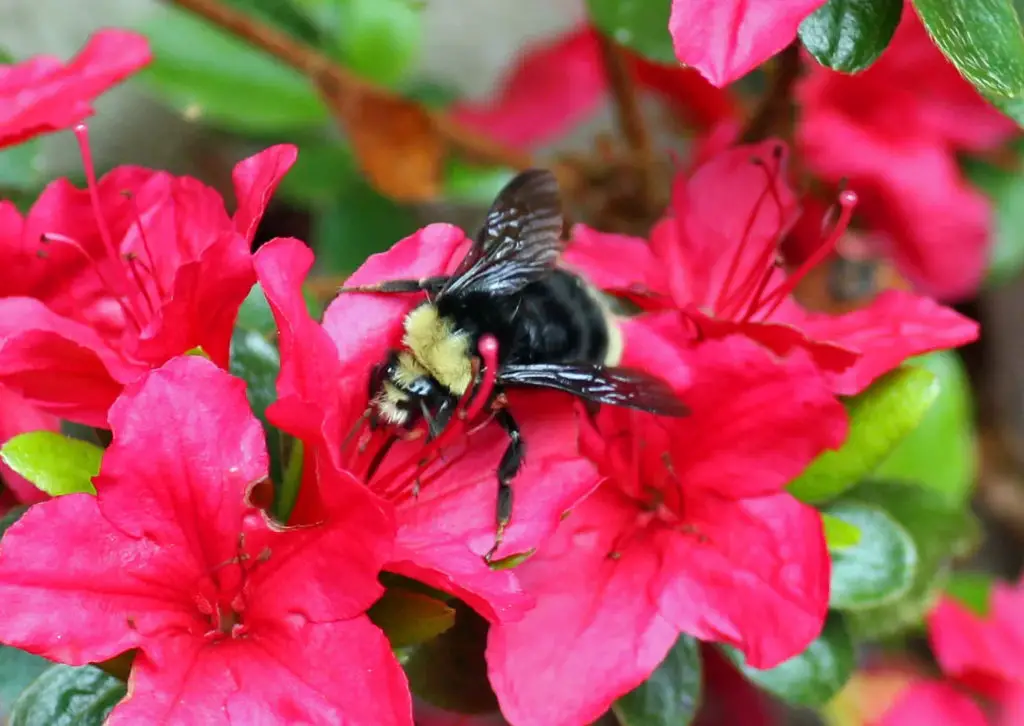Affiliate Disclaimer - As an Amazon Associate I earn from qualifying purchases.
It supports the website. So, Thank you
Bees are clever little creatures and they’re totally self sufficient. Not only do they make ample supplies of honey to feed the colony but they make many other substances to ensure its survival. Royal jelly is just one of them but how is royal jelly made?
Royal jelly is a naturally occurring substance that nurse bees secrete from a special gland, located in the hypopharynx. It is mainly used to feed the larvae that will potentially become the new queen.
The journey from flower to food is a pretty interesting one and in this post, I’d like to take a closer look at the process as well as giving you some interesting royal jelly facts.
Table of Contents
What Is Royal Jelly?
You know how mammals produce milk to feed their young? Well, bees aren’t equipped with mammary glands to do this but they still need to be able to feed their young. That’s where royal jelly comes in.
It’s a natural substance that is produced by nurse bees (the ones in charge of raising the young) that is given to larvae as well as young females destined to become queen.
How Do Bees Make Royal Jelly?
Like most bee products, royal jelly starts its life as pollen. Bees collect this substance from flowers during their foraging flights.
But they can’t just use pollen on its own so they mix it with their saliva as well as plenty of honey. The result is a jelly-like liquid that is secreted from the glands in the hypopharynx as well as the maxillary glands of the nurse bees.
Interestingly, it is only the young nurse bees that are able to produce this substance and they’re typically as young as five days old when they undertake this responsibility. However, the job only lasts for around ten days as, by the time they’re 15 days old, the nurse bees are past it and can no longer produce royal jelly.
What Is Royal Jelly Used For?
Royal jelly is essentially baby bee food. It’s bursting with nutrients and proteins that help the larvae develop into strong and healthy juveniles. All larvae are fed on royal jelly but not all of the young bees continue this diet.
It’s only the specially selected females that continue to eat royal jelly before they go into their adult stages. The benefit of this is that royal jelly allows the females’ reproductive systems to develop. It’s only the queen that is able to lay eggs so this is vital if the young bee is going to one day become queen of the colony.
What’s more, a diet of royal jelly encourages greater growth so the young female will become much larger than the other members of the colony; they could be as much as one and a half times bigger than their hive mates. Another key trait of a queen bee!
Can Humans Eat Royal Jelly?
Most people have tried honey; that sweet, sticky, golden liquid that is perfect as a natural sweetener. But did you know that there are other bee products that can be a delicious treat for humans? That includes royal jelly.
However, if you’re keen to try it, I should warn you that royal jelly is something of an acquired taste. In fact, I’d go as far as to say that you’ll either love it or hate it.
That’s largely because, while it does boast a certain sweetness, there is also a sour taste to royal jelly. That’s because of the high acid content of the substance.
Most people take royal jelly for its health benefits which include lowering the risk of heart disease, anti-inflammatory properties, the potential to lower blood sugar, not to mention the multitude of vitamins and nutrients it contains.
What’s more, royal jelly has long been used as a topical treatment for wounds as its anti-bacterial and anti-inflammatory properties are known to speed up healing. It also has some anti-fungal benefits which makes it an ideal treatment for certain skin conditions.
With all of that in mind, it is worth pointing out that medical specialists warn against the use of royal jelly for people who suffer with allergies or asthma as it could cause an adverse reaction.
How To Eat Royal Jelly
If you’re keen to include royal jelly in your diet and reap the health benefits then I have some good news; there are lots of ways you can consume it.
Some people like to take a teaspoon of royal jelly each day but I think it’s better to include it in other recipes as this may make it more palatable.
For example, you could spread it on toast along with some honey or you might mix it with some natural yogurt. Other people like to add it to their morning cereals and you can even stir it into your cup of tea or coffee. It goes especially well with herbal or fruit teas which also come with a range of health benefits.
For those of you that aren’t keen on the taste of royal jelly, it may be a better idea to include a spoon in your favorite smoothie. This way, you’re getting all of the benefits but you can mask the sour taste with your favorite fruits.
Final Thoughts
Have you ever wondered how is royal jelly made? Bees use honey, saliva, and pollen to make this gelatinous liquid which they then secrete from special glands to feed their young.
But it’s not only bees that can enjoy this natural treat. Royal jelly is also a fantastic way to boost your health and it can be consumed in a number of ways.




